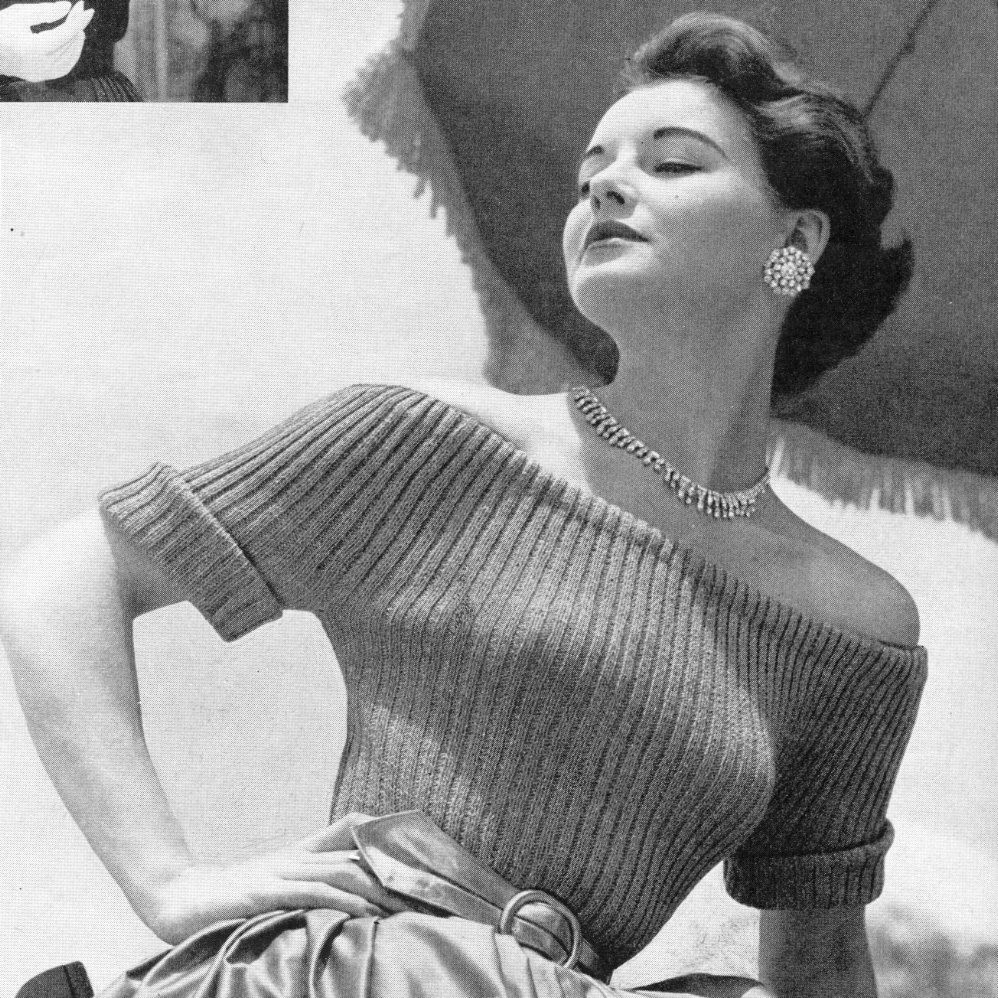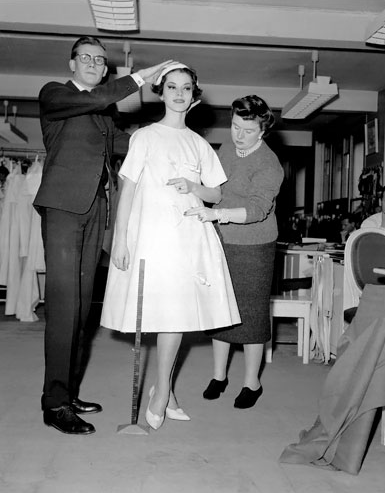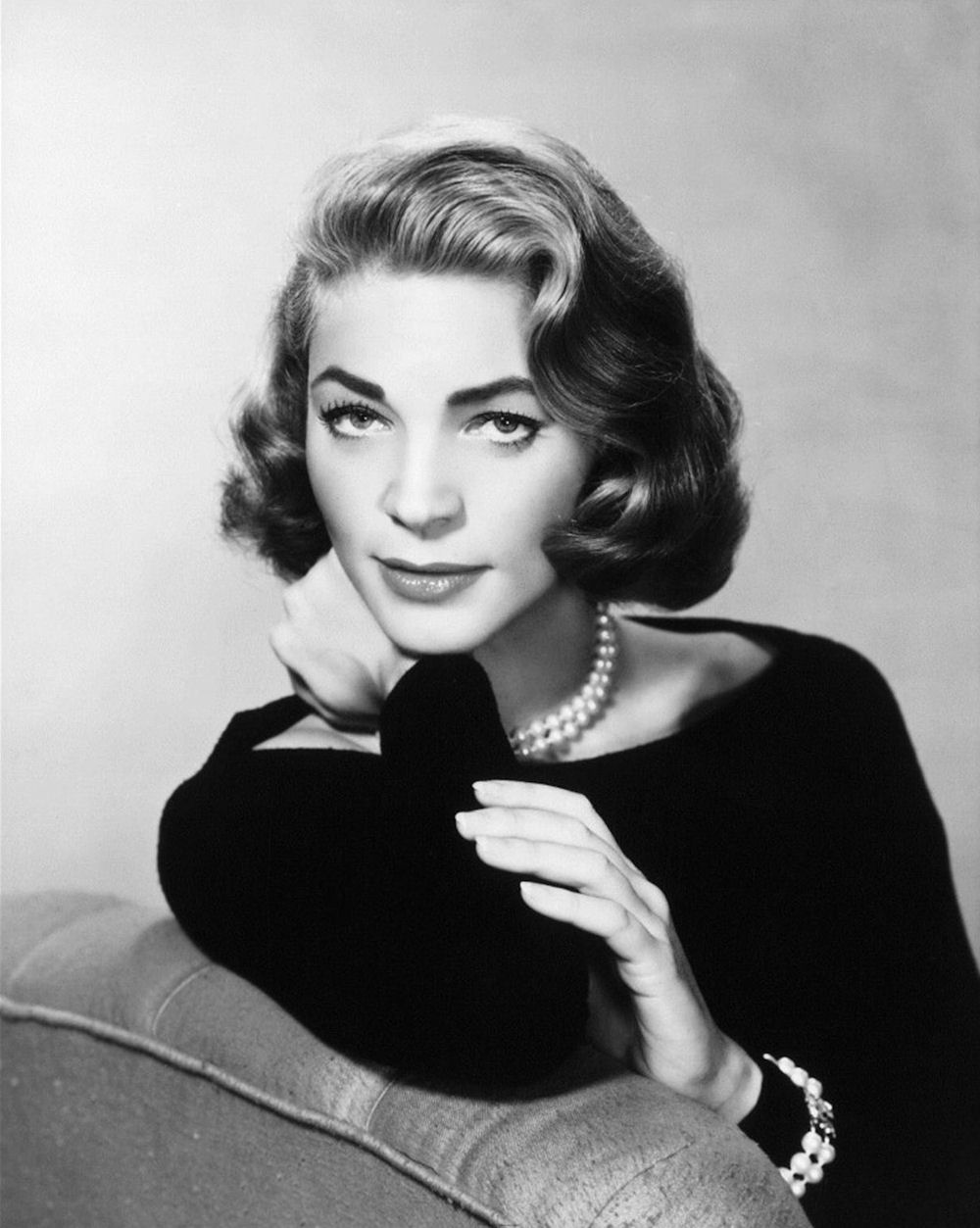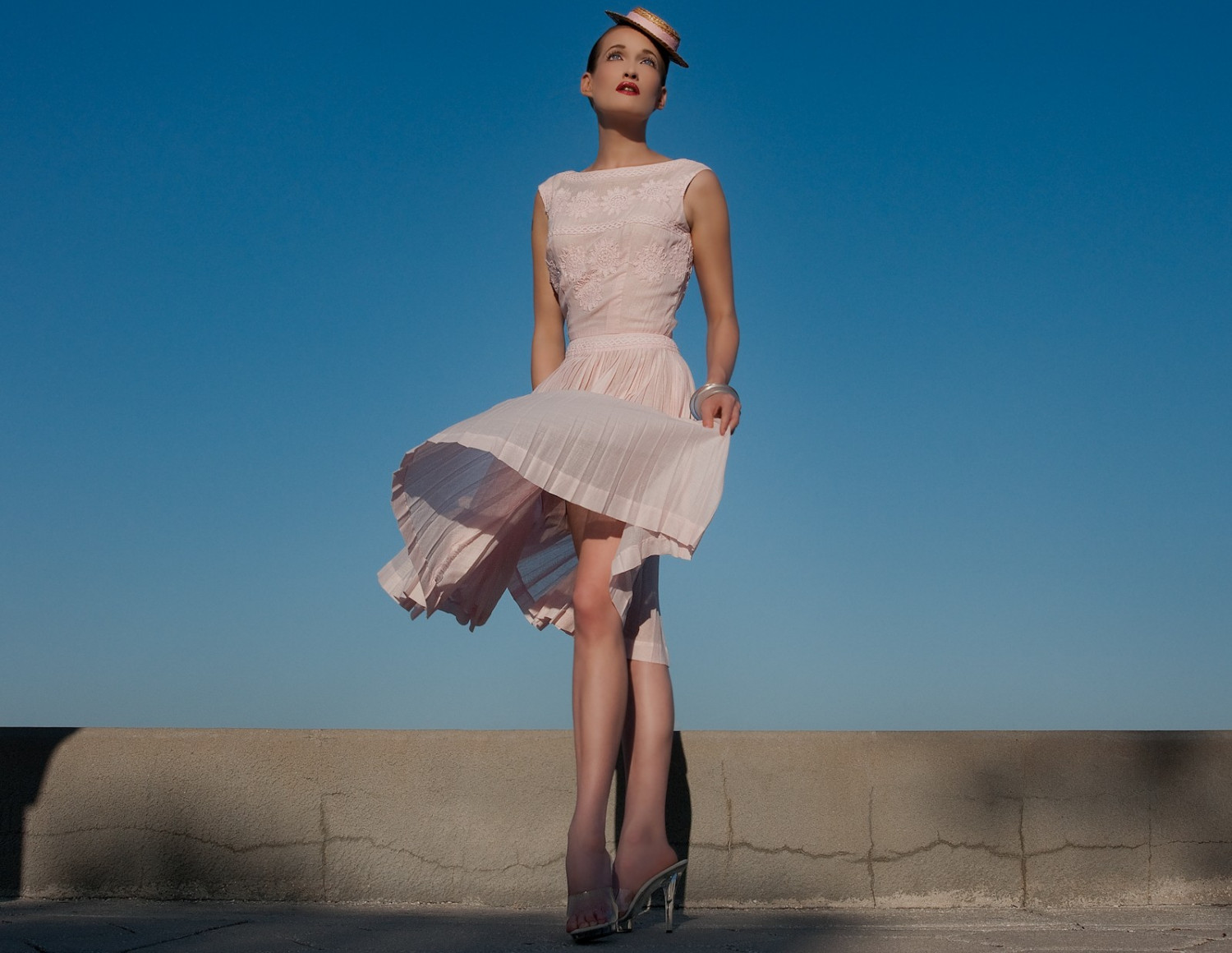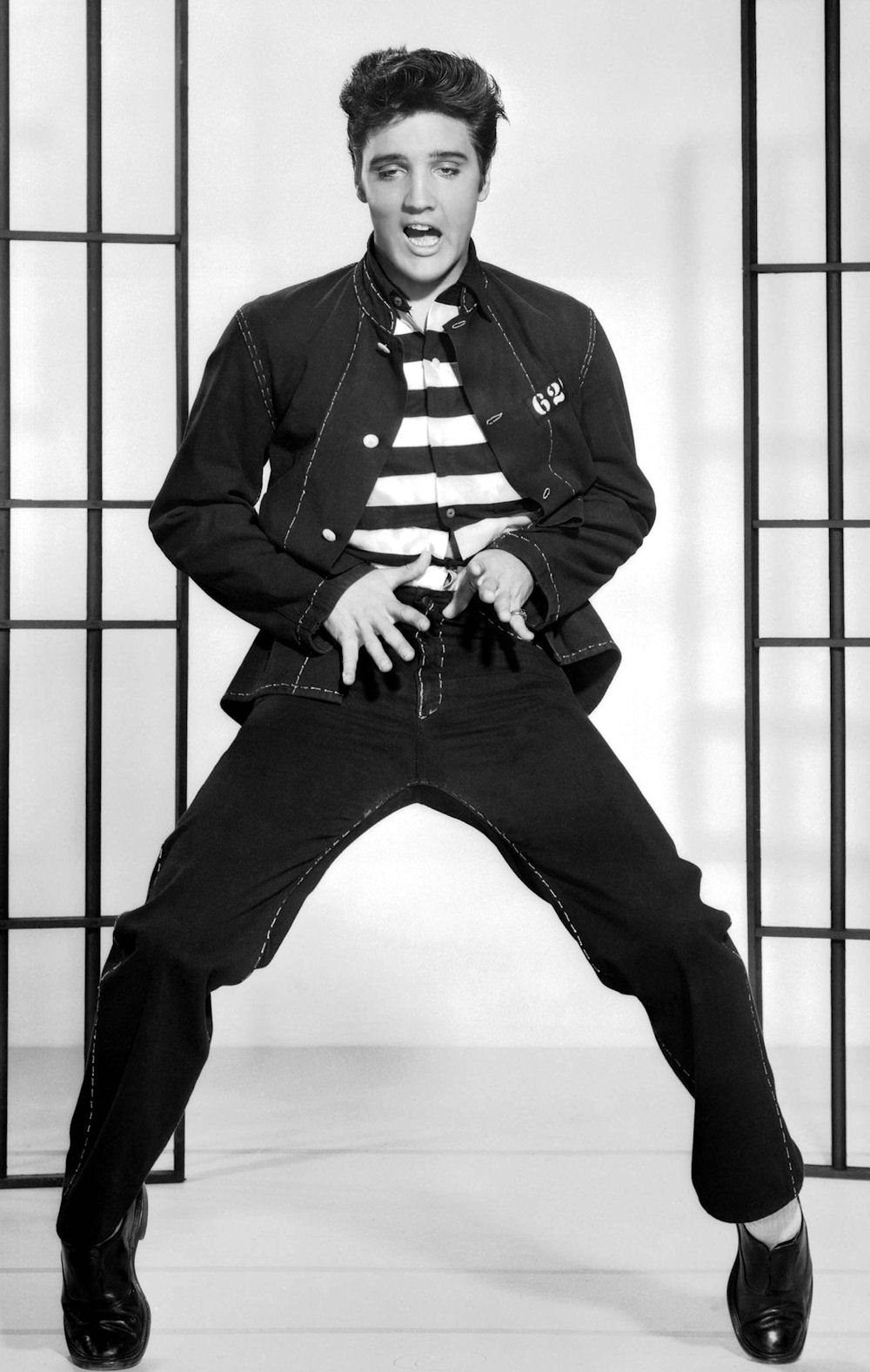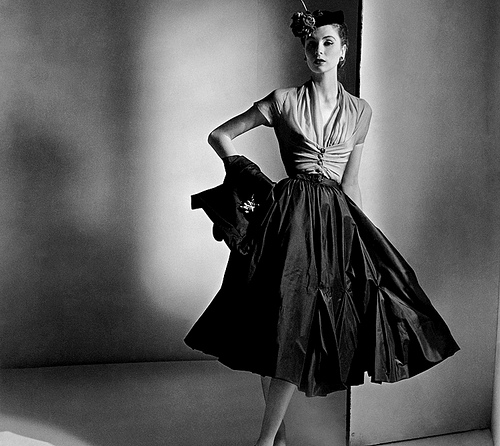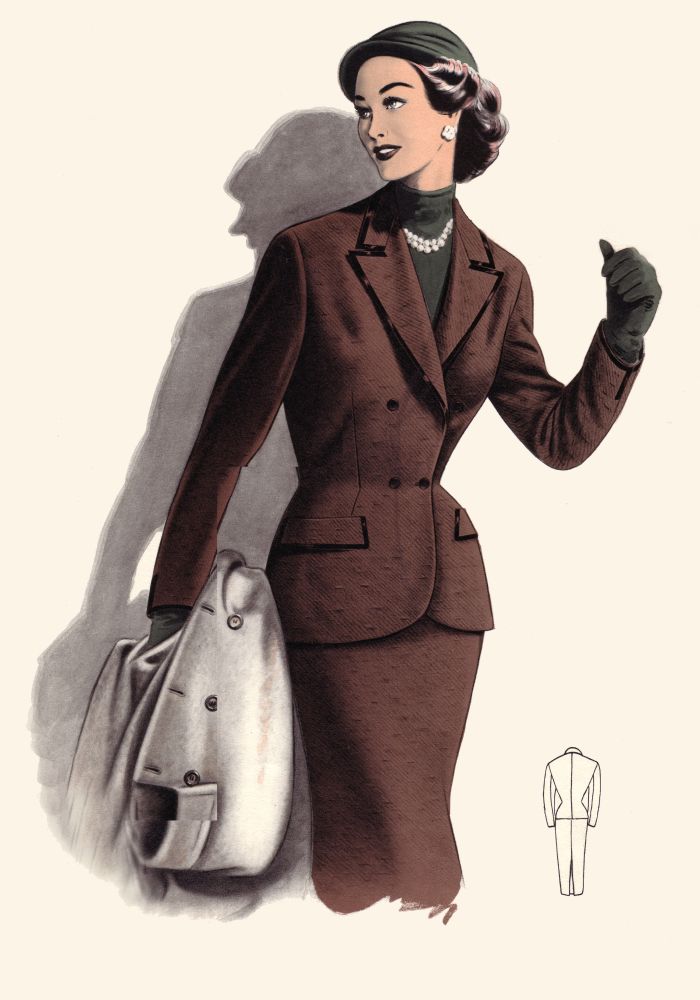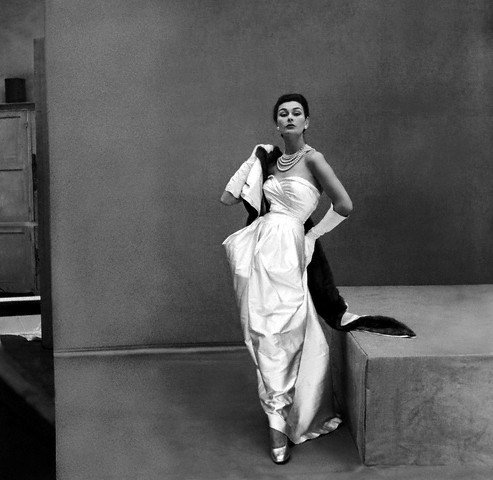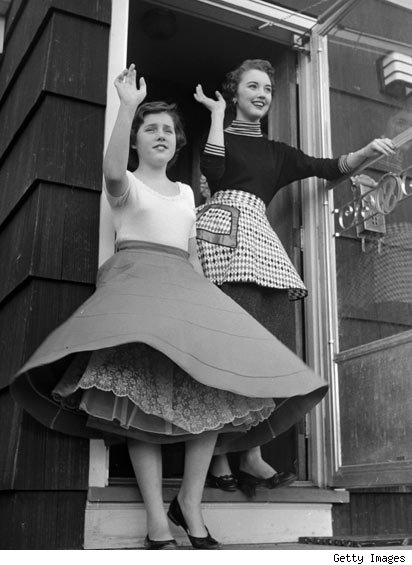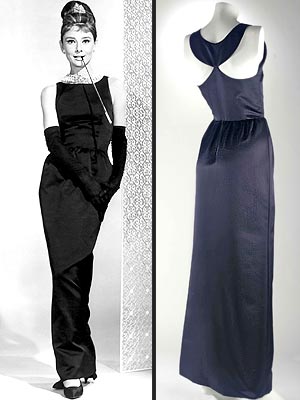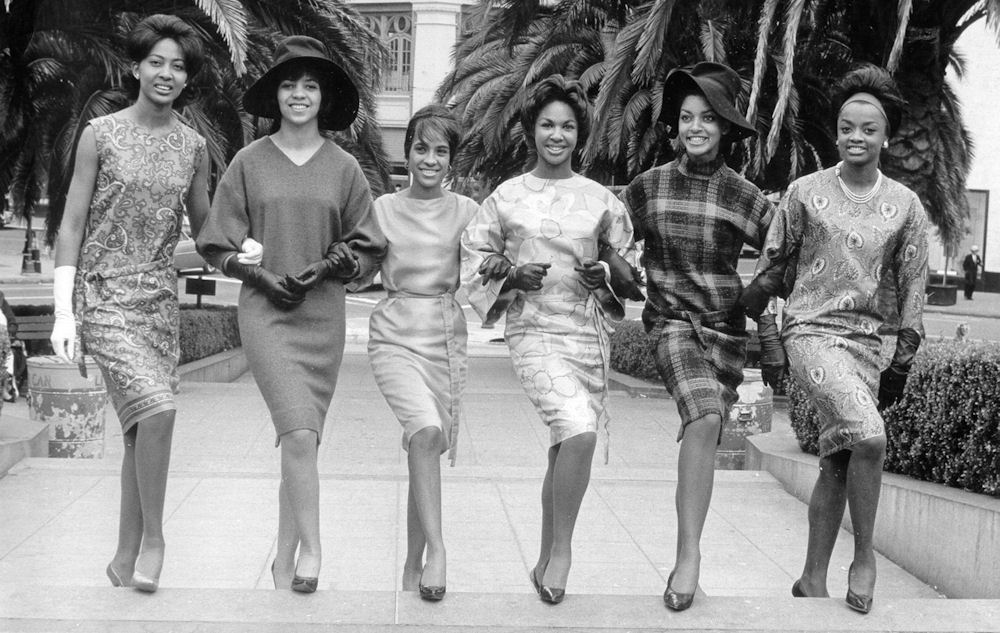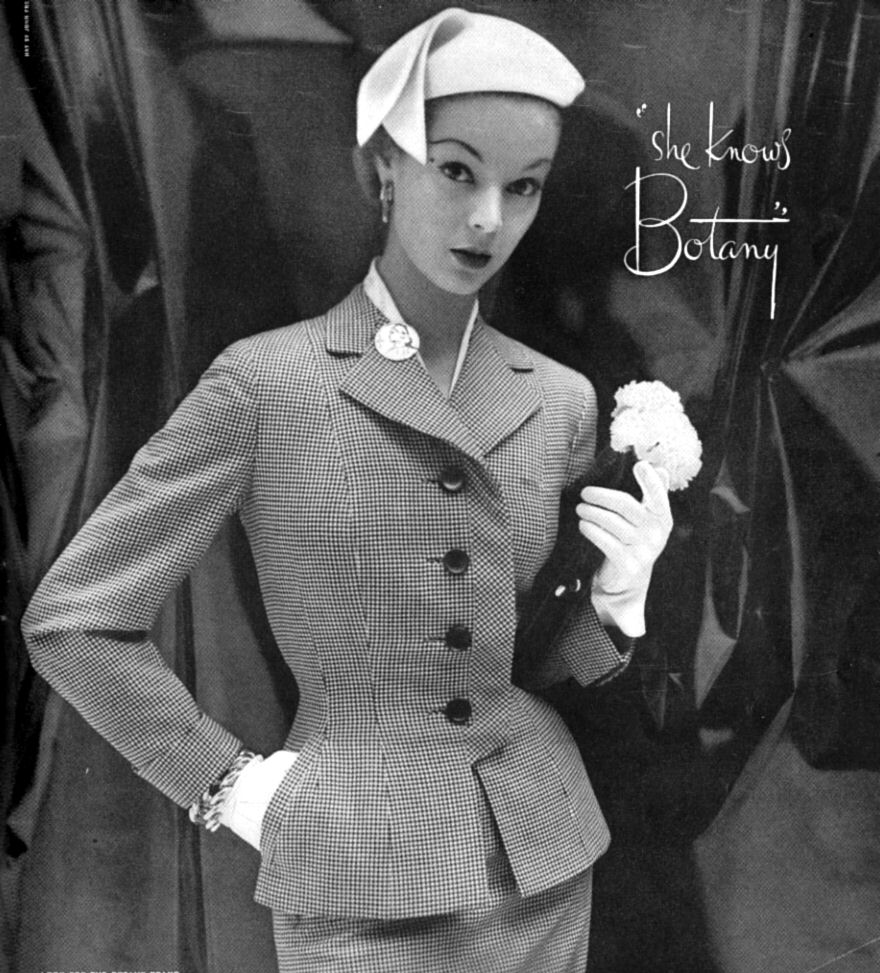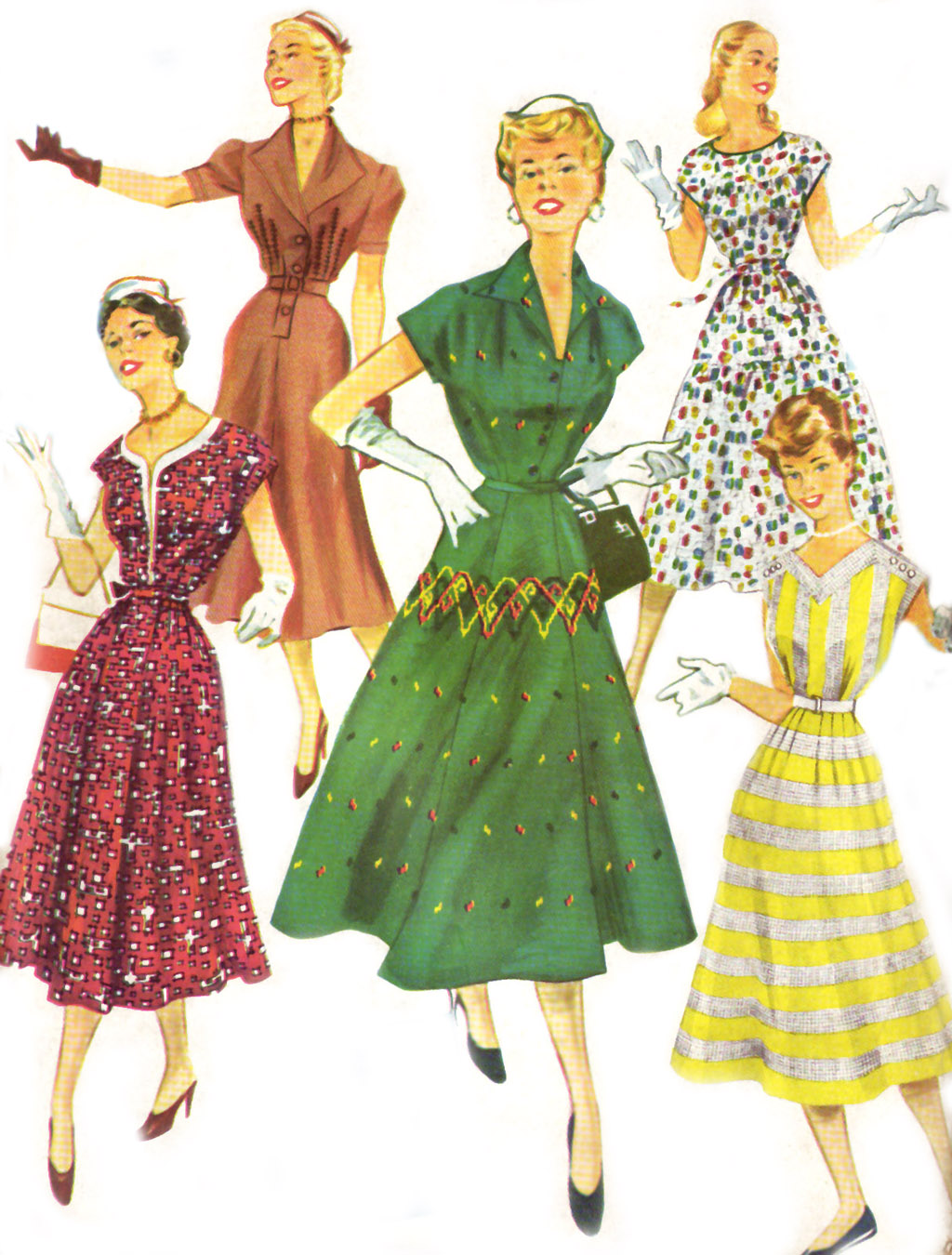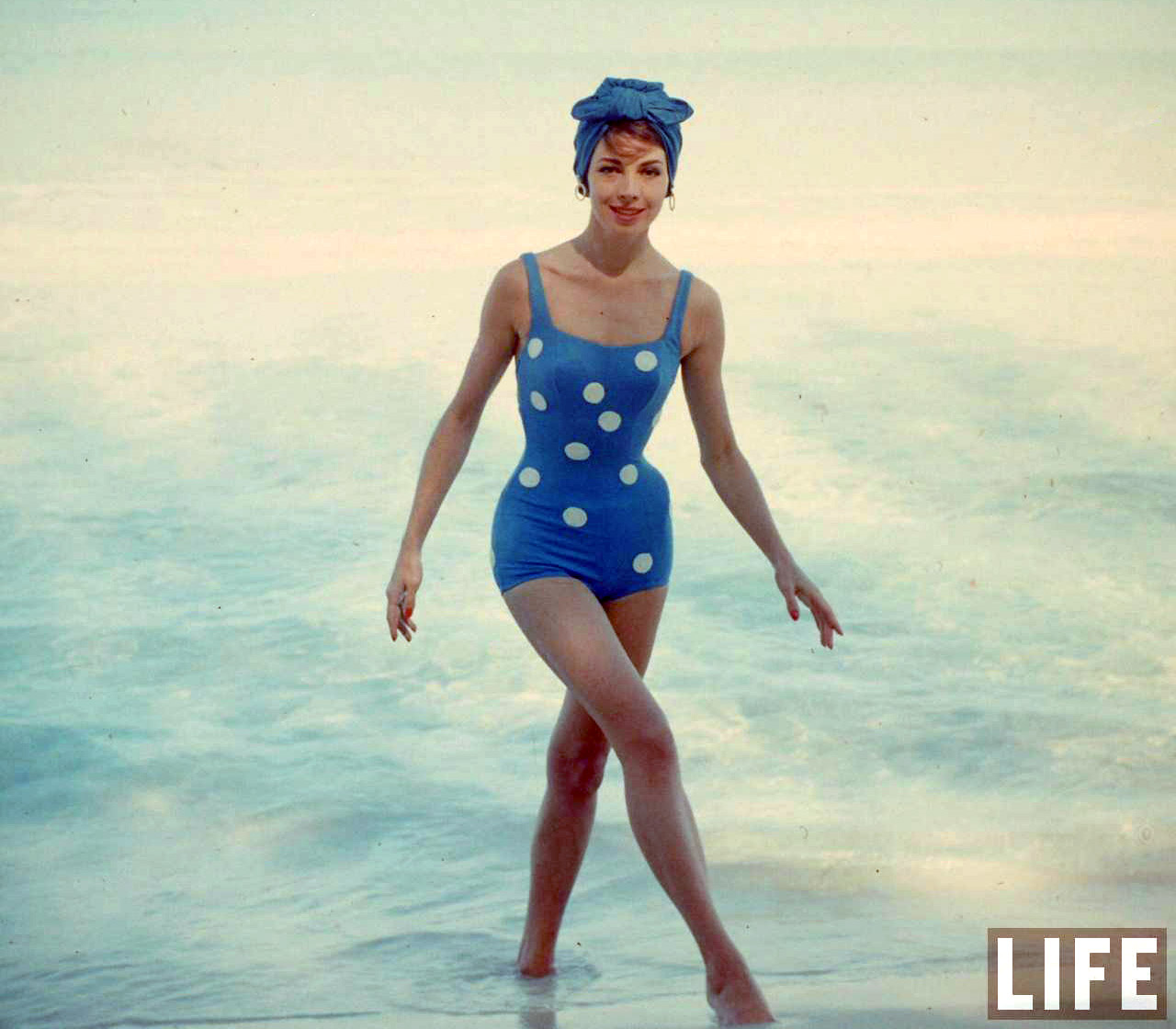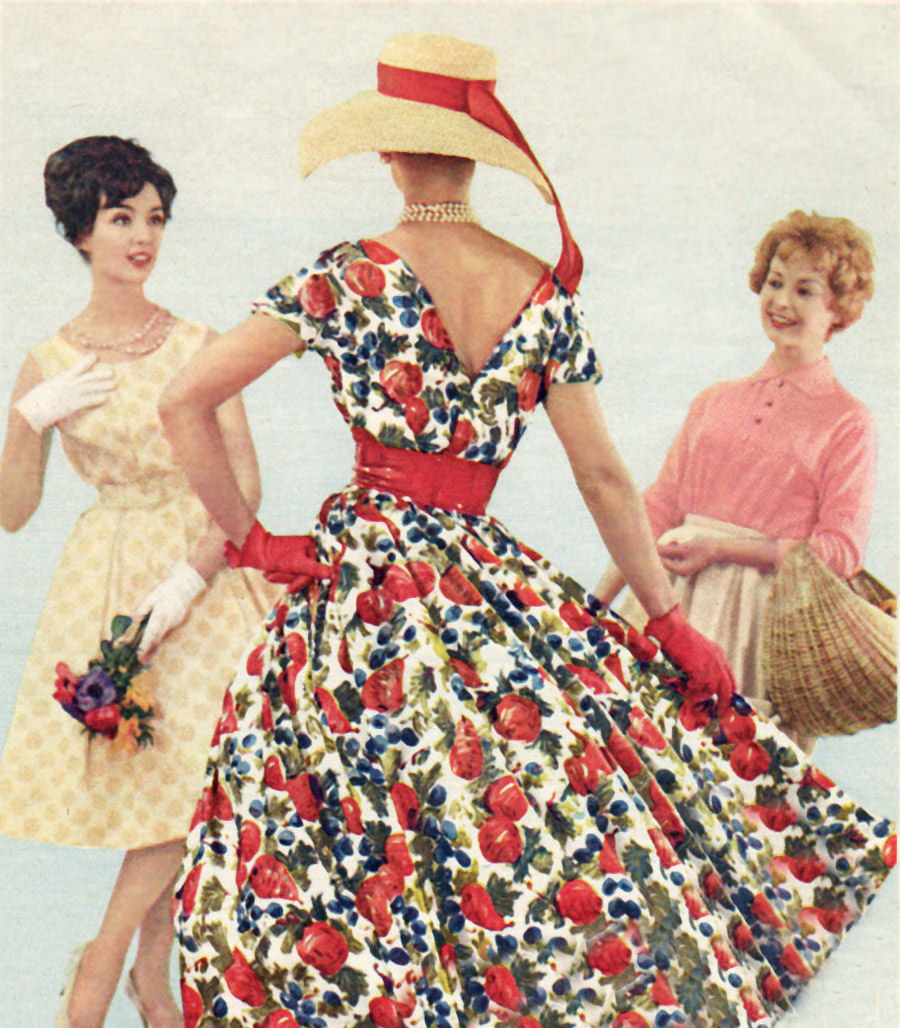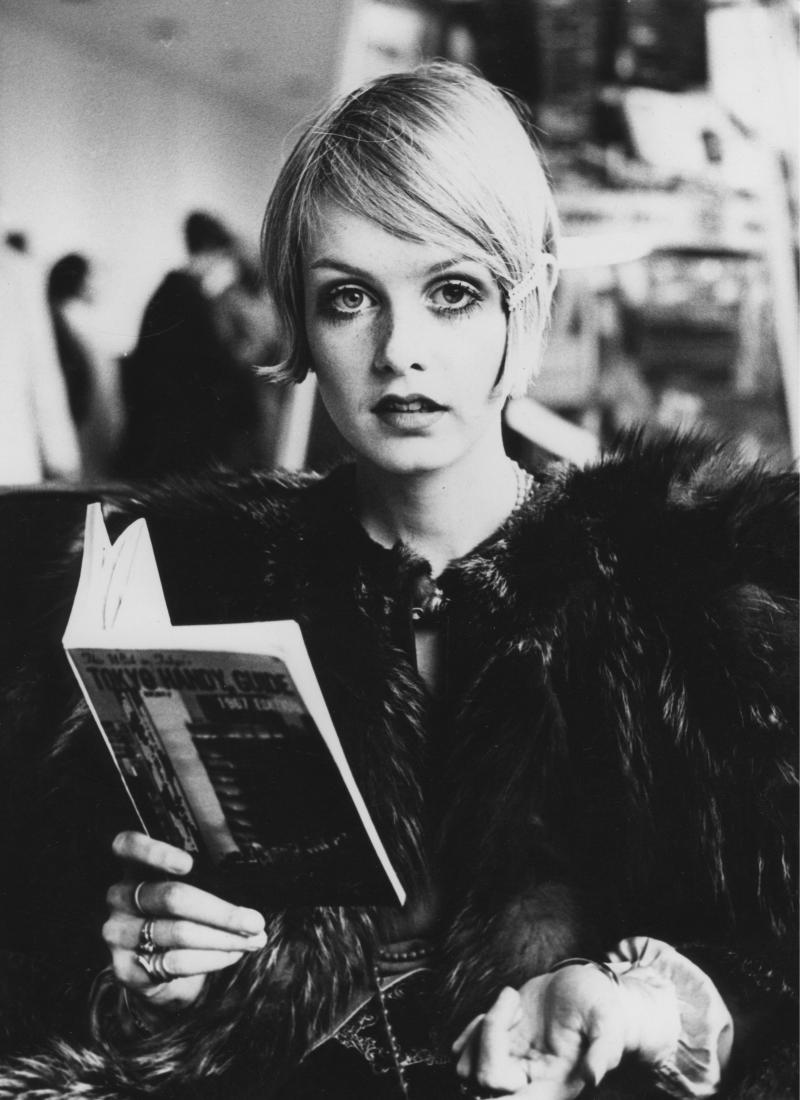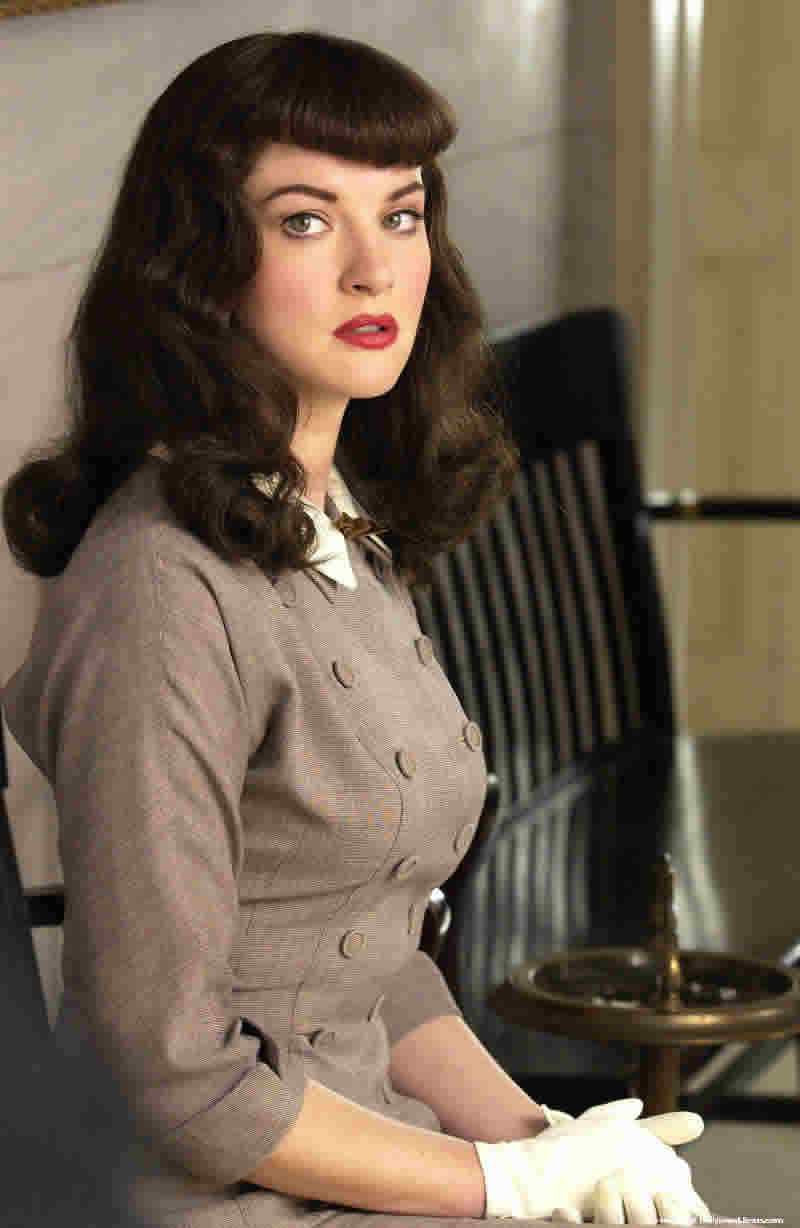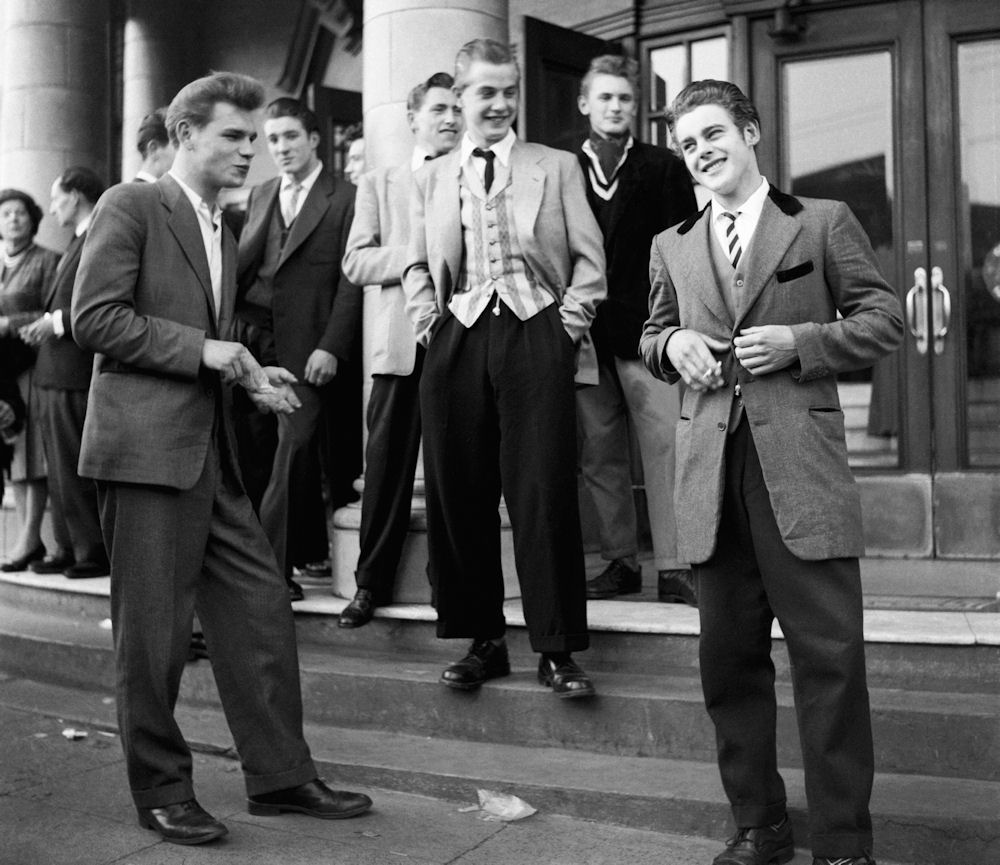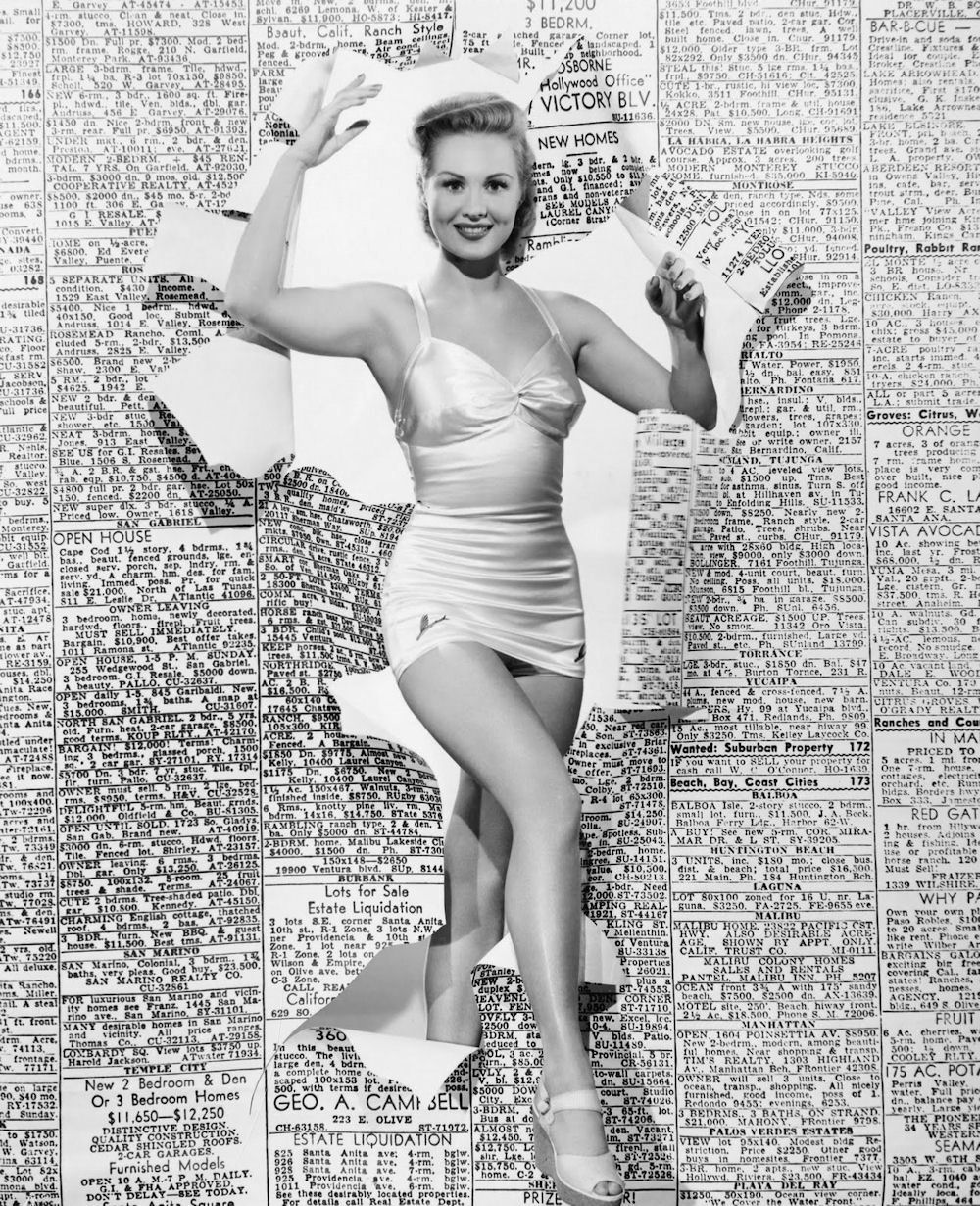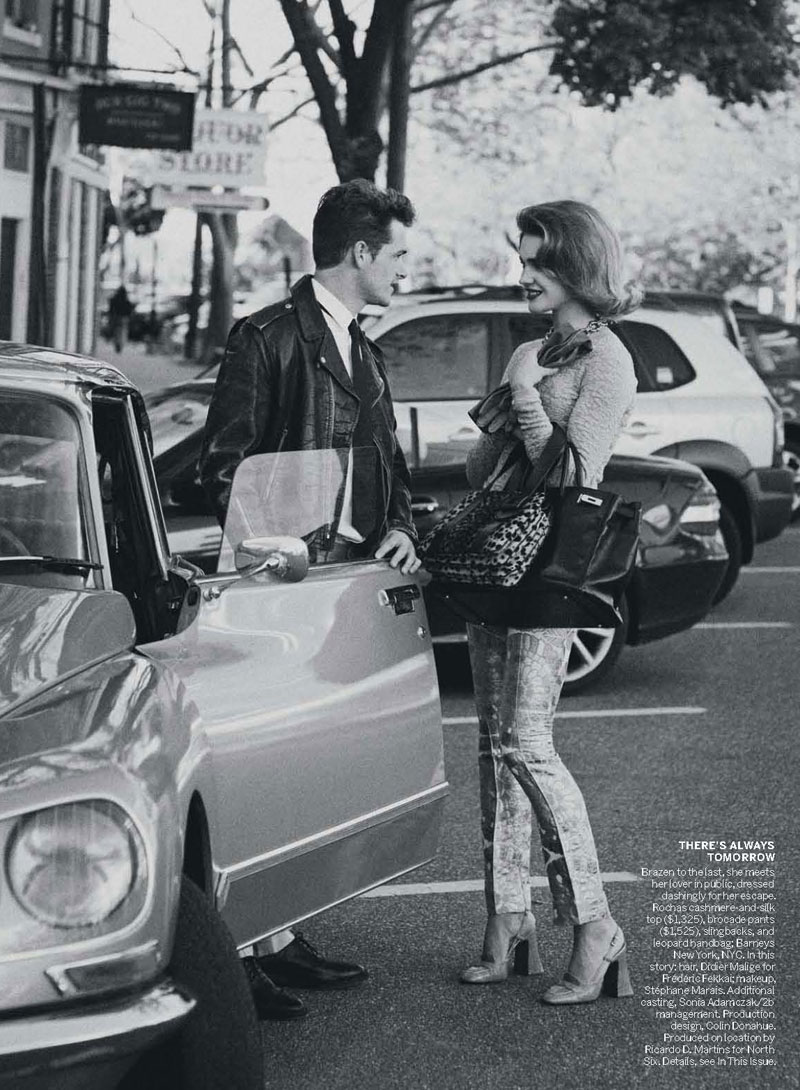| 1950s Fashion
The Fashion eZine - Retro Styles This Website is Best Viewed Using Firefox
Edited by Suzanne MacNevin - April 2011. The 1950's spawned a wide variety of original and distinctive styles, presented with a classic new age twist. For America, recently recovering from catastrophic tragedies related to the second World War, the 1950's brought restored hope; a chance for a new way of life whose destiny would be decided by them alone. This metamorphosis of America was heavily represented by fashion. Women especially dramatically altered the way they dressed and presented themselves; during the evolution of an increasingly liberated society, women began to favor casual, relaxed clothing over traditional dress rules and associated formality of previous decades. Some of the most admired new trends for women in the 1950's included button-up sweaters with simple necklines, fitted blouses, and full knee-length skirts. However, the most prevalent fashion for women during this time was dresses. Most dresses were worn casually, and were accentuated with circle skirts, halter straps, or small collars. Evening wear dresses seemed soft yet daring, coming in many pastel hues and accompanied with bold ruffles, tulle trim, and dazzling velvet bows. The fitted evening wear of this period, which was usually sleeveless or strapless, was also emphasized with sheer silk.
Growing increasingly popular, the full skirts of the 1950's needed some sort of support in order to maximize their look. To address this problem, Nylon petticoats were created exclusively to be worn in conjunction with full skirts to create fullness. Nylon was a favorable material because of its high quality and easy care wash. This fullness it created transformed the skirt who gave nothing more than a gentle swish, into a glamorous royal-like flutter. Another significant fashion of this period is the swing coat, developed in the last 1940's by Jacques Fath. The silhouette of the swing coat was "designed perfectly to cover full skirts, and also ideal for the post war high pregnancy rate".
Another trend in the 1950's was the "trapeze dress: a swinging dress almost triangular in shape and designed to be worn with low shoes and bouffant hairstyles." The trapeze dress was later modified into a shorter baby doll tent style dress, which was popular in the next decade. Perhaps one of the most classic fashion garments from the 1950's was Christian Dior's H-line of 1954, which consisted of a slender tunic-style suit with a slim skirt. His other popular fashions during this period were his A and Y lines. Dior has long been a dominant force in the fashion world, especially in the 1950's. His creative and usually voluminous garments gave women a more feminine touch. Another designer, Hubert Givenchy created a Parisian style dress in 1957 which he called the Sack. The Sack began the trend of straighter-waist dresses. Initially, it developed into the "fitted darted sheath dress and later into the loose straight short shift dress." Coco Chanel was another major fashion designer in the 1950's. In contrast to popular full and flouncy skirts, Chanel began creating the boxy, now classic Chanel suit jackets and skirts in trimmed and textured tweed. The materials Chanel chose were always richly textured, which contributed to the finished product's high prices. Chanel's silhouette of her suits was completely straight, divinely lined with silk. Her look was classic, refined, and adorned with details.
Chanel also accessorized many of her designs with strings of pearls and collarless jackets, both of which were considered fashionable in the 1950's. One of the most classic trends from the 1950's is the empire line, which was introduced in the late 1950's. This style was applied to dresses and shirts mostly, and was adored by teenagers who looked innocently childlike, hence the coined phrase "baby doll style". During the 1950's, all teenagers were expected to dress like their elders. The empire line was also a striking contrast from what most mothers wore at the time, which contributed to its high approval among teenagers in America. Until the 1950's, the term "teenagers" was not commonly used, and certainly not a targeted market group. But with a new range of influences, including film, television, rock music, and magazines, teenagers began to be respected and acknowledged in the community. Often nicknamed the "Space Age", the 1950's was an important time in history for science and development as well. So many aspects of life changed during this period, perhaps partially attributed to the recent end of World War II. America had emerged from war with prosperity and a new identity. A new consumer-based society was "forging ahead, helped by such new developments as the credit card system" (Baker, 6).
These innovative conditions however produced a similar effect on the fashion industry: while so many things in the lives of Americans were changing, they stayed clear from the radical, intense fashions while preferring the normalcy of standard trends. For once, being normal felt good. Another huge change in the 1950's was the increased ownership of television sets. Popular television programs such as I Love Lucy connected Americans on both sides of the Atlantic, bringing a sense of unity in the country. Segregation was ended in 1954, which brought together black and white students for the first time though racial tensions were still high, and also birthed the existence of civil rights leaders such as Martin Luther King Jr. Constant fears of communism reaching the states held many Americans tight with fear. More changes brought forth in the 1950's include the discovery of DNA, the launching of the first space satellite, an increase of women in the work field, and of course, rock and roll. All of these economic, social, and political changes in the world affected the American citizens, and therefore the fashion industry.
Regardless of the world's issues, the top fashions that drove the industry were more influenced by those who were idolized by the consumers: celebrities. Some of the most popular celebrities in the 1950's include Marilyn Monroe, James Dean, Ricky Nelson, and of course, Elvis Presley. Marilyn Monroe's sexy yet simple style was a widely imitated across America, by women of all shapes and sizes. Elvis Presley was another huge influence in the 1950's; not only was he adored by millions of girls, but he was also an inspiration for men. In a time where men only wore traditional attire, Elvis tore down all barriers which confined men to navy suits and ties. Elvis typically wore clothes that were more popular among the African American population. His wild pegged pants and zoot suits concerned the conservative community of America, who hardly approved of such a "gender bending, race-integrating star" (SOURCE). Elvis' bright and baggy clothes, makeup, and so called obscene dancing all acted as evidence of his single handed destruction of the morals of America's youth. Not all men followed the examples Elvis set however. In fact, more men in this time period dressed conventionally than not. Most men in the 1950's maintained clothes with casual and modest colors, including dark blue, dark brown, and charcoal. The occasional daring young man would wear pastel pink to stand out; a trend that was just gaining momentum in the 1950's. Cardigan sweaters were popular among athletes, and older men. Additionally popular were fitted vests, plaid flannels, and collared jackets. There was flexibility in men's casual wear, and was a common sight to see shirt tails sticking out. Basic fedora-style hats were also a staple item in the 1950's for men.
Hats were also fashionable accessory for women in the 1950's, for the reason that they were believed to add a final touch of glamour to any woman's outfit. The pillbox hat, first introduced by Balenciaga and later modeled by Jackie Kennedy, became one of the trendiest accessories of the decade. Several glorious hat styles existed in the 1950's. Some hats were covered in flower petals, while others were adorned with swirls of georgette. Gloves were also worn often by women, especially those of elite social status. Some were made of cotton, which was much more affordable than leather or nylon. Though gloves came in many colors and styles, clean gloves whose color was white or cream were the most favored. Fur trimmings and adorned collars were also extremely fashionable. Brooches too, were considered a glamorous accessory. The 1950's was a decade in which fashion changed dramatically from previous generations. Multiple influences from political debates, to economic issues, to new age celebrities and mass media all influenced the distinct styles and trends which identify the 1950's. Recovering from the casualties of World War II brought a lasting change to America, which was reflected in the fashions of this decade. The American women craved glamorous simplicity in their new lives, and as a new and liberated society evolved, the women of America began to liberate themselves by choosing which fashions they felt depicted them best. Not only were the 1950's important in history, but they also greatly transformed the face of fashion in America. References Baker, Patricia (Fashions of a Decade: The 1950's. NY: Infobase, 2006.) See Also: Men's Hats
|
|
||||||||||||||||||||||||||||
|
|||||||||||||||||||||||||||||
|
|
|||||||||||||||||||||||||||||

